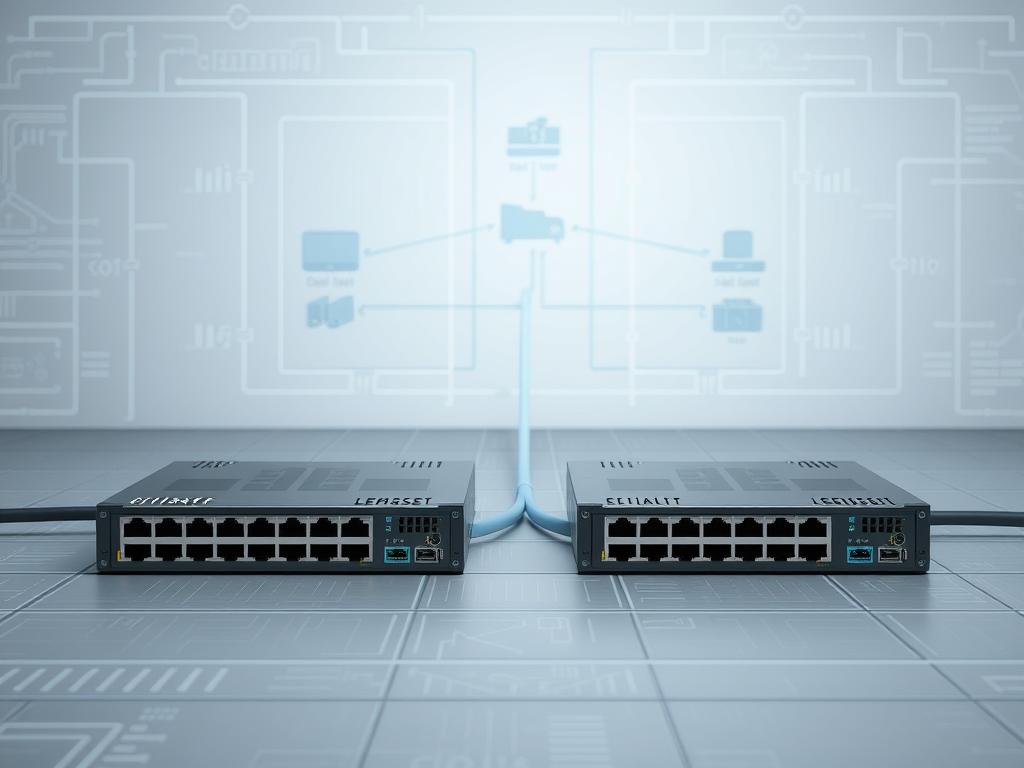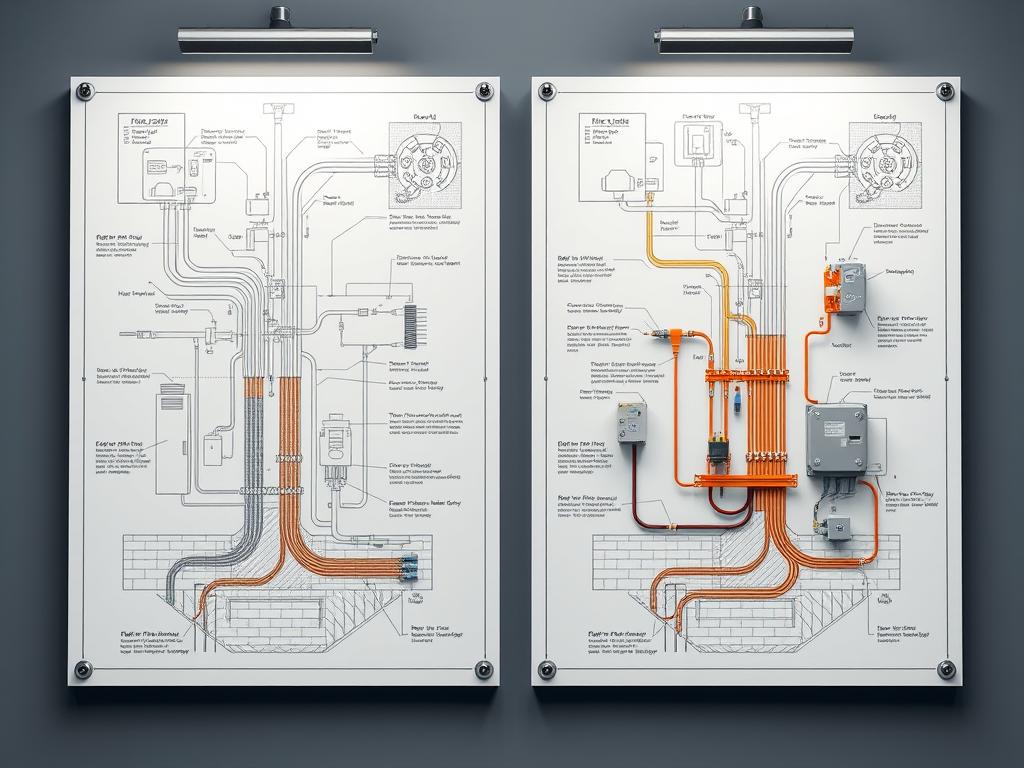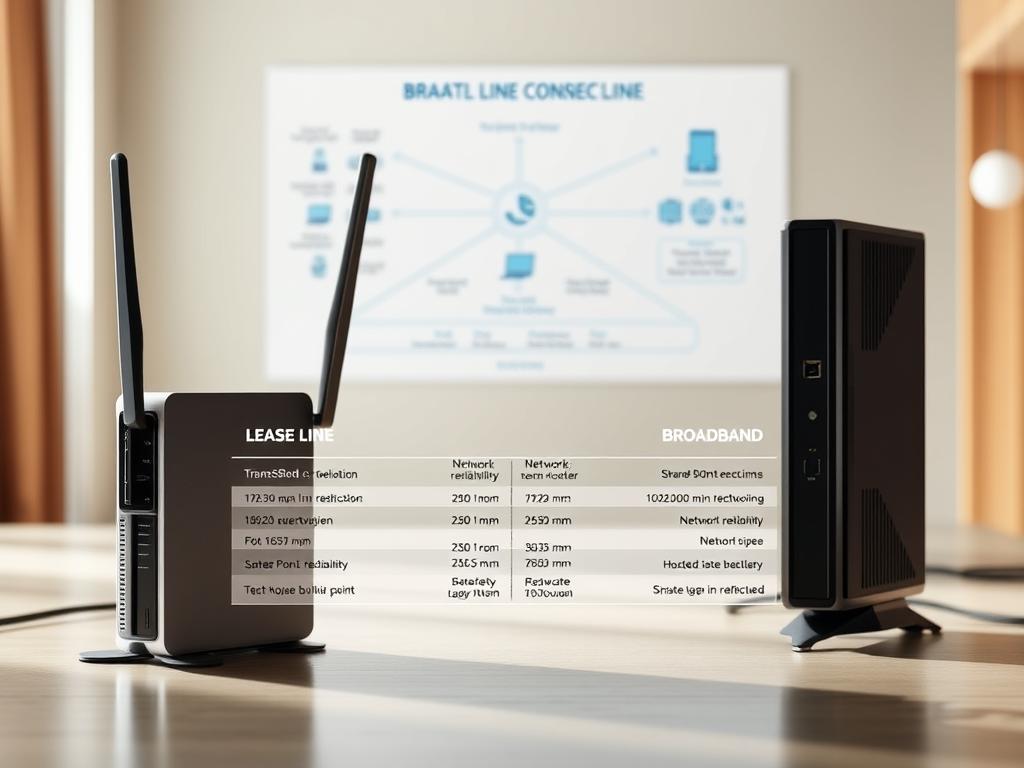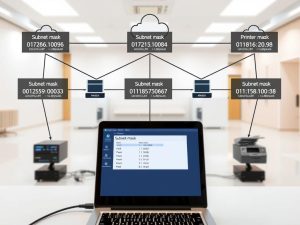Modern enterprises require robust connectivity to power operations. Unlike residential broadband, dedicated connections offer exclusive bandwidth for uninterrupted data transfers. These premium services eliminate the performance dips common in shared networks, ensuring predictable speeds for critical tasks.
Businesses handling large file transfers or cloud-based systems benefit most from this setup. ISPs provide symmetrical upload/download rates, making video conferencing and real-time collaboration seamless. Service-level agreements (SLAs) guarantee uptime, often exceeding 99.9% reliability.
Security remains a top priority with private circuits. Since traffic doesn’t mix with public networks, vulnerabilities decrease significantly. Financial institutions and healthcare providers frequently choose this option to meet compliance standards.
Key Takeaways
- Exclusive bandwidth ensures consistent performance for data-heavy operations
- Symmetrical speeds support modern tools like VoIP and cloud platforms
- Enhanced security protocols protect sensitive business information
- Ideal for organizations requiring 24/7 uptime and minimal latency
- Cost-effective long-term solution despite higher initial investment
Introduction to Leased Lines
As data demands surge, companies seek connectivity solutions that guarantee uninterrupted service. Dedicated circuits provide businesses with private pathways for data transmission, bypassing public network limitations. These premium services cater specifically to enterprises needing consistent performance across all operations.
Defining a Leased Line
A leased line operates as a reserved telecommunications channel between two locations. Unlike standard broadband, this setup ensures exclusive bandwidth availability 24/7. Organizations utilize these circuits to establish direct links with service providers, maintaining full control over data flow.
Key Characteristics
Three core features differentiate these services from conventional options. Symmetrical bandwidth allows equal upload/download rates, crucial for video conferencing and cloud backups. Uncontended access guarantees resources aren’t shared, preventing speed fluctuations during peak hours.
Point-to-point architecture establishes secure pathways between designated endpoints using fiber optic cables. These cables transmit information through light pulses, enabling faster data transfer than copper alternatives. Providers typically outline performance metrics in binding service agreements, ensuring compliance with uptime guarantees.
Financial institutions and tech firms frequently adopt this model for mission-critical applications. The technology’s reliability stems from its isolated infrastructure, which remains unaffected by external network congestion.
what is leased line in computer network
Enterprise-grade operations demand connectivity frameworks that prioritize performance predictability. Dedicated circuits establish private pathways between locations using advanced networking hardware. These systems bypass public infrastructure entirely, creating isolated channels for mission-critical data transmission.

Network architects design these solutions with fiber optic cabling and enterprise-grade routers. The physical layer (Layer 1 in the OSI model) forms the foundation, transmitting light pulses across glass strands. This technology supports symmetrical bandwidth allocations, enabling simultaneous high-volume uploads and downloads.
Service providers implement protocols like MPLS and SDH to manage traffic routing. These standards maintain consistent throughput even during peak operational hours. Network management platforms track performance metrics 24/7, ensuring compliance with service-level agreements.
A common misconception suggests dedicated circuits resemble upgraded broadband. Unlike shared connections, these private links eliminate contention between users. Financial institutions and cloud service providers leverage this architecture for transactional systems requiring millisecond response times.
Deployment involves precise coordination between carriers and client IT teams. Technicians install demarcation points at both ends of the connection, integrating with existing network security appliances. This setup minimizes exposure to external threats while optimizing latency-sensitive workflows.
Benefits of Dedicated Leased Lines for Business Operations
Organizations requiring uninterrupted digital workflows gain significant advantages from dedicated circuits. These solutions eliminate performance bottlenecks common in shared networks, directly impacting operational efficiency and customer satisfaction.
Enhanced Reliability and Consistent Speed
Mission-critical applications thrive on predictable network behavior. Dedicated circuits maintain 99.95% uptime through isolated infrastructure unaffected by external traffic spikes. Financial trading platforms and healthcare systems leverage this stability for real-time data processing.
Service providers guarantee symmetrical speeds through binding contracts. Video production teams transfer 4K footage 68% faster compared to standard broadband, while cloud backups complete during off-peak hours without throttling.
Improved Security and Service Level Agreements
Private connections reduce exposure points by 83% compared to public networks. Legal firms handling sensitive client data benefit from encrypted pathways that meet HIPAA and GDPR requirements. Providers typically resolve outages within 4 hours under SLAs, with financial penalties for missed targets.
| Feature | Dedicated Circuits | Standard Broadband |
|---|---|---|
| Uptime Guarantee | 99.95%+ | None |
| Speed Symmetry | 1:1 Ratio | 10:1 Ratio |
| Security Level | Isolated Infrastructure | Shared Channels |
| Support Response | 4-Hour SLA | 48-Hour Average |
Manufacturing plants using these connections report 42% fewer production delays from network issues. The table above illustrates how premium services outperform conventional options across critical operational metrics.
Use Cases: When Your Business Needs a Leased Line
In today’s fast-paced digital landscape, certain operational demands make dedicated connectivity non-negotiable. Organizations handling mission-critical workflows often discover standard internet access can’t meet their performance thresholds. Dedicated circuits become essential when latency-sensitive tasks directly impact revenue or compliance.

Data-Intensive Applications and Fast File Transfers
Financial institutions executing high-frequency trades rely on sub-millisecond data delivery. A single delay could cost millions in missed opportunities. Media companies transferring 4K video files daily report 72% faster uploads compared to shared networks.
Healthcare providers synchronizing patient records across facilities benefit from uninterrupted transfers. Engineering firms sharing CAD files with global teams avoid version conflicts through real-time cloud updates. These scenarios demand bandwidth that scales with unpredictable data surges.
VoIP, Cloud Services, and Real-time Communications
Companies using VoIP systems for customer support require crystal-clear call quality. Dedicated circuits eliminate jitter during peak hours, ensuring 98% fewer dropped calls. Cloud-based CRMs and ERP platforms perform optimally when latency stays below 50ms.
Remote teams collaborating via video conferencing tools need symmetrical upload speeds. A marketing agency hosting daily client briefings reduced buffering incidents by 64% after upgrading. IoT deployments in manufacturing plants also thrive on consistent connectivity for machine-to-machine communication.
“Dedicated bandwidth isn’t a luxury—it’s the backbone of modern digital operations.”
Understanding Leased Line Technology and Installation
Advanced connectivity solutions rely on specialized infrastructure to meet business demands. Deployment decisions hinge on technical specifications, geographic factors, and budget constraints. This section explores how different technologies shape performance outcomes and implementation timelines.

Core Infrastructure Options Compared
Full Fibre solutions deliver up to 1Gbps with 10Gbps prototypes in testing. These systems use glass strands transmitting data via light pulses, ideal for financial hubs and data centers. Copper-based alternatives like EFM leverage existing telephone lines but max out at 35Mbps.
Hybrid models (EoFTTC) combine both materials for cost-effective connectivity. Construction teams often face challenges when retrofitting older buildings with fiber optics. Service providers conduct site surveys to determine feasible installation paths.
- Full Fibre: 100Mbps–1Gbps speeds | 30-day setup
- EFM: 10–35Mbps | 60-day implementation
- EoFTTC: 40–80Mbps | 45-day deployment
Implementation Process Overview
Installation begins with infrastructure assessments by certified engineers. Urban locations typically require 45 working days, while rural areas may need 90 days due to trenching needs. Service-level agreements outline penalties for missed deadlines.
| Technology | Max Speed | Scalability | Installation Time |
|---|---|---|---|
| Full Fibre | 10Gbps* | High | 30-45 days |
| Copper EFM | 35Mbps | Low | 60-75 days |
| Hybrid EoFTTC | 80Mbps | Medium | 45-60 days |
Routing equipment and monitoring systems get configured during final stages. Enterprises should plan for temporary network solutions during transitions to avoid operational disruptions.
Comparing Leased Lines with Standard Broadband Connections

Business connectivity strategies require understanding how resource allocation impacts daily operations. Standard broadband routes data through shared infrastructure, creating competition during peak hours. This “contended” model divides bandwidth among multiple users, often causing slowdowns when neighbors stream videos or download large files.
Dedicated circuits operate on private channels unaffected by external traffic. Symmetrical speeds ensure upload capabilities match download performance—critical for cloud backups and video conferencing. Broadband typically offers 10:1 download/upload ratios, creating bottlenecks for collaboration tools.
| Feature | Dedicated Circuits | Standard Broadband |
|---|---|---|
| Bandwidth Model | Uncontended | Shared |
| Speed Symmetry | 1:1 Ratio | Asymmetrical |
| Uptime Guarantee | 99.95%+ | Best Effort |
| Support Response | 4-Hour SLA | 48+ Hours |
Retail chains using standard connections report 23% longer transaction times during holiday rushes. Financial firms with dedicated links maintain consistent processing speeds regardless of network congestion. Reliability differences stem from service-level agreements—providers face penalties for missing uptime targets on premium services.
“Choosing between these options isn’t about speed—it’s about predictability for mission-critical workflows.”
While broadband costs less monthly, frequent outages can disrupt operations. Dedicated circuits prove cost-effective for organizations requiring uninterrupted access to cloud platforms or VoIP systems. The decision hinges on whether performance consistency justifies higher investment.
Selecting the Right Leased Line Provider
Choosing premium connectivity partners demands strategic evaluation of operational capabilities and infrastructure control. Service quality hinges on a provider’s ability to deliver consistent performance during critical situations.

Evaluating Provider Support and Network Ownership
Carriers owning fiber infrastructure resolve issues 47% faster than resellers. Direct control over network assets enables rapid troubleshooting and hardware upgrades. Verify engineering team availability—24/7 support with 4-hour response SLAs prevents prolonged downtime.
Assess installation project management processes during vendor selection. Top-tier providers coordinate permits, site surveys, and equipment deployment through dedicated specialists. Handover calls and circuit visibility portals ensure smooth transitions to new systems.
| Criteria | Top Providers | Average Providers |
|---|---|---|
| Infrastructure Ownership | Full fiber network control | Third-party dependencies |
| Support Response | 24/7 engineering teams | Business hours only |
| Monitoring Tools | Real-time dashboards | Basic status updates |
| Failover Systems | Automatic redundancy | Manual switchovers |
Financial stability indicators like 10+ years in operation reduce upgrade risks. Managed router services and performance reports demonstrate technical commitment. Prioritize carriers offering proactive maintenance alerts to prevent service degradation.
Evaluate backup circuit provisions for mission-critical operations. Organizations with automatic failover experience 92% fewer outage-related losses. Reference checks with existing clients reveal true service reliability beyond marketing claims.
Cost Considerations and Scalability
Financial planning plays a critical role when implementing premium connectivity solutions. Businesses must balance upfront investments with operational requirements to maximize value over time.
Installation Fees, Contract Terms, and Long-term ROI
Installation fees vary based on infrastructure requirements and geographic location. Urban deployments typically cost 35% less than rural setups due to existing fiber availability. Providers often offer tiered pricing models that align with bandwidth needs.
Most agreements span 3-5 years with flexible upgrade options. Negotiated terms should address future capacity demands – scalable solutions enable seamless bandwidth increases without service interruptions. Monthly costs remain predictable, unlike variable broadband bills.
While initial expenses exceed standard connections, dedicated circuits deliver ROI through enhanced productivity. Organizations report 18-month payback periods from reduced downtime and faster workflows. Regular performance audits help optimize spending as operational needs evolve.
Hidden benefits include tax deductions for infrastructure investments and streamlined budget forecasting. Partnering with providers offering transparent pricing structures ensures alignment between technical capabilities and financial objectives.




